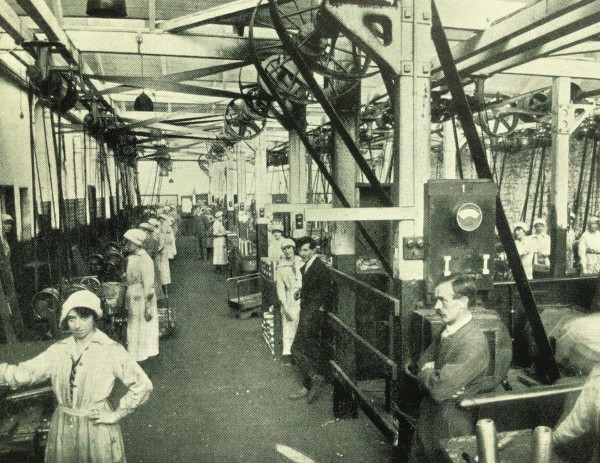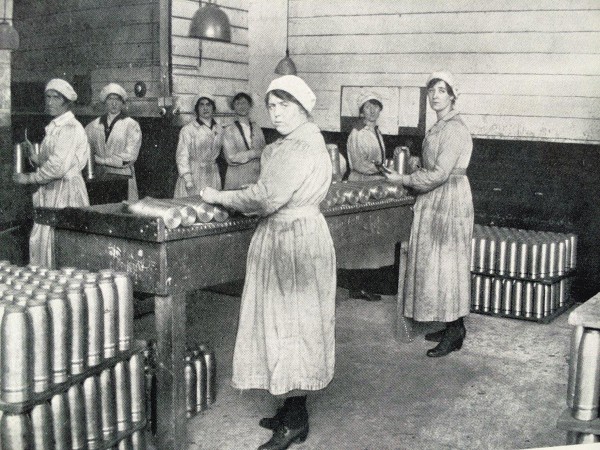
Images courtesy of Dublin Port Company.
When Hugo McGuinness was giving a talk around a series of photographs depicting a group of women working in a munitions factory in the Docklands, a member of the gathering piped up, pointed to a picture and proclaimed, “That’s my Granny!”
The title was born and the quest was launched to find out more about the other faces in the pictures. Who were these women that were making bombs for the British war effort and why has their story and that of the Irish Munitions Factories been obscured for so long?
NewsFour went along to the RICC on April 30th where Dublin Dockers Preservation Society in conjunction with EWHG discussed the impact that the factories had on Irish life, using the prints to illustrate.
A question from the audience opened up a debate. “How did they feel about working there? The bombs they were making were going to kill.” McGuinness referred to the Dublin of 1916 for his answer. “I don’t think they would have thought about that. This was an opportunity to contribute to the household budget, a chance to take their families out of adverse poverty. They had come through 1913 starving and this was like winning the lottery. They were earning a man’s wage and were able to achieve economic freedom and independence for themselves.”
The story of the Dublin Docklands’ War Munitions Factory is also the story of industrialisation, feminism and trade unionisation in Ireland as the smoke was clearing after the 1913 lockout.
Declan Byrne from Dublin Dockers Preservation Society said, “We dig where we stand and the official history is very different from memories passed down from parents and grandparents.”
McGuinness echoed this with, “Little of working class history was written down. Factories and employer records are lost and a lot of the really meaty stuff is preserved in the funny stories passed down.”
One of the early recruits in the National Factory (in Parkgate Street) was Christine Molly Maguire, who unionised the Shop. She became National Organizer and her success spread to Dockyard Plant. In 1917 the National Federation for Woman Workers secured an agreement with the ministry to have the women’s wages put on an equal footing with their counterparts in the UK. Her effectiveness took her to England where she worked as activist for the Union.
This was a remarkable achievement for this period. As the employment of women was novel, advisory booklets were produced, examining nutritional health needs of women workers and efficient design of staff canteens.

Images courtesy of Dublin Port Company.
Regulations stated that 5% of staff could be male. The founder of the Port and Docks Plant, Scottish-born John Smellie was extremely impressed with the workers’ performance. The procedure called for delicacy and skill over muscle.
For many of these girls, the work had a personal significance. They had fathers, uncles, brothers and lovers serving at the front, and a high standard of work would help ensure their survival.
For a brief time, the women saw their working status enhanced and their ability to represent themselves recognized. “This factory must have had a profound effect on people’s lives,” ruminated McGuinness.
For Florence Lee from Sandymount, it was life-changing. She went from being a dressmaker’s apprentice, earning two shillings a week, to a munitions worker, earning 50 shillings a week.
Similarly, 16-year-old Mary Johnson from East Wall became a dancer in the Tivoli, and was a veteran who went on to work in a Birmingham factory in WWII. Perhaps this could be an indicator that these women did not just go back to the kitchen.
Arguably, the main beneficiary of the factory was the IRA, who used it as a training ground for operations, proving useful when the War of Independence got under way in 1919.
If you have any information to offer up about the factories, please contact the East Wall History Group or Dublin Dock Workers’ Preservation Society.
By Maria Shields O’Kelly

